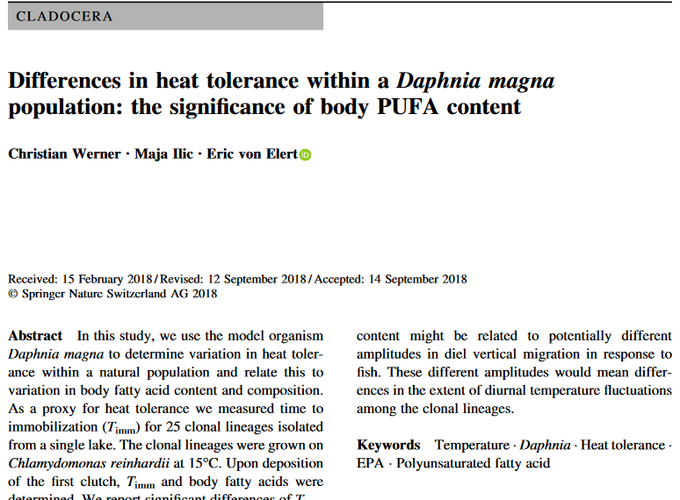Differences in heat tolerance within a Daphnia magna population - the significance of body PUFA content
Abstract
In this study, we use the model organism Daphnia magna to determine variation in heat tolerance within a natural population and relate this to variation in body fatty acid content and composition. As a proxy for heat tolerance we measured time to immobilization (Timm) for 25 clonal lineages isolated from a single lake. The clonal lineages were grown on Chlamydomonas reinhardii at 15°C. Upon deposition of the first clutch, Timm and body fatty acids were determined. We report significant differences of Timm and of the content of PUFAs and of eicosapentaenoic acid (EPA) among the D. magna clonal lineages. Timm was negatively related to total PUFA-content, indicating that increased body PUFA-content may be detrimental for membrane properties at high temperatures. Juvenile somatic growth varied significantly among clonal lineages, and was not related to total body PUFA-content, hence body PUFA-content was no proxy for PUFA-limitation. No correlative evidence for an impact of body EPA-content on Timm or juvenile growth was obtained. We hypothesize that the observed intra-population variability of body PUFA-content might be related to potentially different amplitudes in diel vertical migration in response to fish. These different amplitudes would mean differences in the extent of diurnal temperature fluctuations among the clonal lineages.
